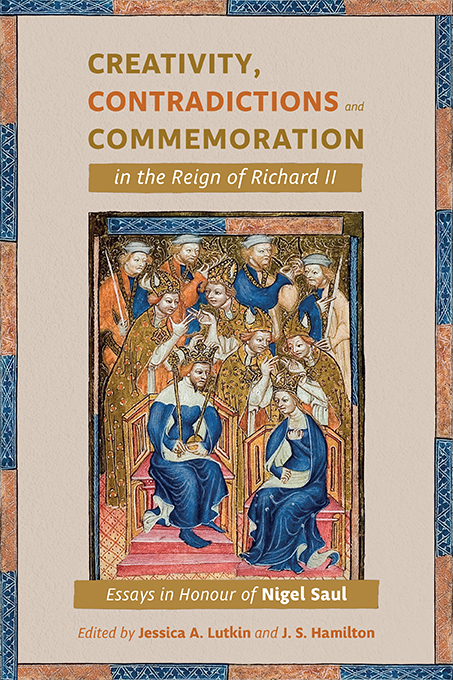 Creativity, Contradictions and Commemoration in the Reign of Richard II
Creativity, Contradictions and Commemoration in the Reign of Richard II 4 - The Bequests of Isabel of Castile, 1st Duchess of York, and Chaucer’s ‘Complaint of Mars’
Published online by Cambridge University Press: 26 May 2022
Summary
A lady of sensual and self-indulgent disposition, she had been worldly and lustful; yet in the end by the grace of Christ, she repented and was converted. By the command of the king she was buried at his manor of Langley with the friars, where, so it is said, the bodies of many traitors had been placed together.
Thomas Walsingham's characterisation of Isabel of Castile (1355–92), 1st duchess of York, is not his only harsh moral judgement of a great aristocrat. The editors of the St Albans Chronicle have underlined his traditional outlook and his marked preference for ‘ladies of extreme piety’, attitudes that no doubt influenced his view of the duchess. His information was not obtained at first hand. In both this part of the Chronica maiora, completed by 1400, and in Ypodigma Neustriae, dedicated to Henry V, Walsingham recorded the date of Isabel's death as 1394, two years after it occurred. Some four decades after the duchess died, the scribe, John Shirley, added a gossipy and unreliable afterword to Chaucer's ‘Complaint of Mars’ in the anthology he compiled between 1429 and 1432. Shirley linked the love affair in the poem with a court scandal involving ‘the lady of York’ and Richard II's half-brother, John Holand, earl of Huntingdon (c. 1352–1400). This has been thought to endorse Walsingham's misanthropic view of a Spanish princess. In particular, it has lent colour to the suggestion that the duchess's youngest child, Richard (1385–1415), was the illegitimate son of Huntingdon. A very different side to Isabel's story emerges from the little that is known of her life, from her husband's will, and especially from the dispositions in the last will and testament she made on her deathbed in 1392.
Isabel was the third of four children of Pedro I, also known as Pedro the Cruel, who ruled Castile from 1350. Their mother was the vivacious and intel-ligent Maria de Padilla, often described as Pedro's mistress. In 1361, when Isabel was only six, her mother died. The following year, Pedro declared that he and Maria had been lawfully married before he was forced to espouse his estranged French wife, Blanche of Bourbon, who was by then also dead, some said murdered by her husband. His claim of an earlier marriage was subse-quently endorsed by the Cortes, thus legitimising Pedro's children by Maria.
- Type
- Chapter
- Information
- Creativity, Contradictions and Commemoration in the Reign of Richard IIEssays in Honour of Nigel Saul, pp. 75 - 96Publisher: Boydell & BrewerPrint publication year: 2022


